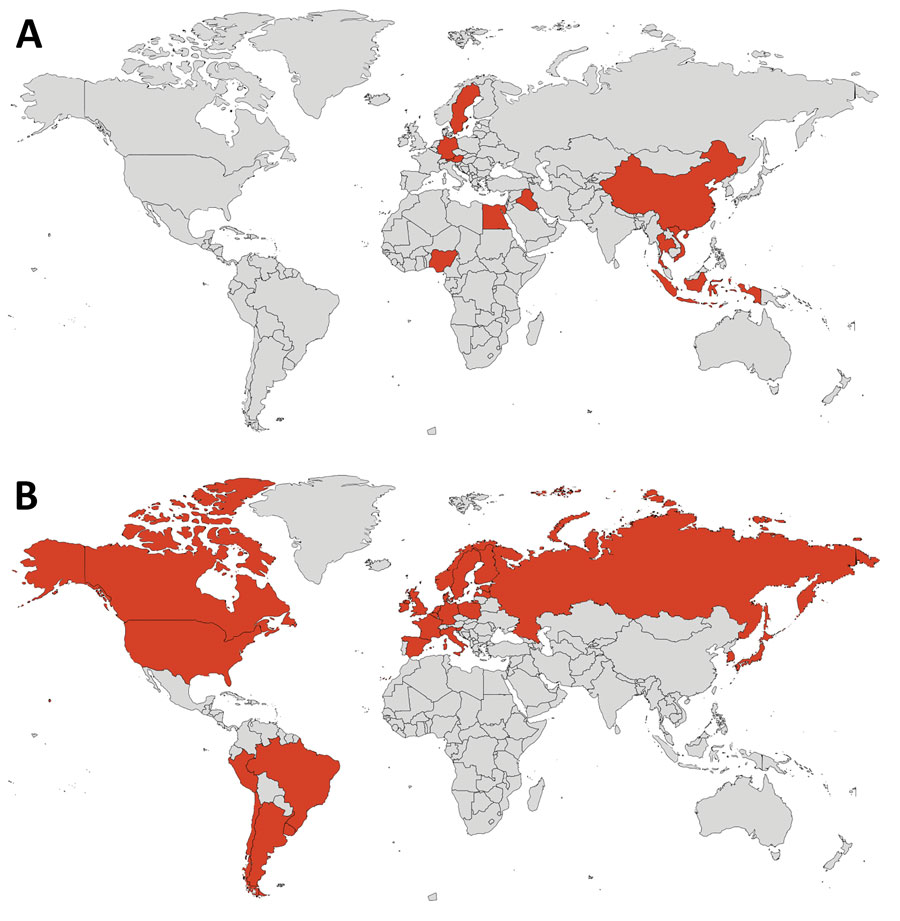Volume 30, Number 3—March 2024
Synopsis
Recent Changes in Patterns of Mammal Infection with Highly Pathogenic Avian Influenza A(H5N1) Virus Worldwide
Figure 1

Figure 1. Geographic location of mammal species affected by highly pathogenic influenza virus A(H5N1) in previous waves of infection, 2003–2019 (A), and in the current panzootic, 2020–2023 (B).
Page created: January 31, 2024
Page updated: February 22, 2024
Page reviewed: February 22, 2024
The conclusions, findings, and opinions expressed by authors contributing to this journal do not necessarily reflect the official position of the U.S. Department of Health and Human Services, the Public Health Service, the Centers for Disease Control and Prevention, or the authors' affiliated institutions. Use of trade names is for identification only and does not imply endorsement by any of the groups named above.